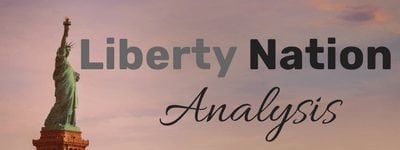For an Audio Version of this article click here:
One might be curious about the impact of the new tax law when reading the article published earlier this week in The Hill entitled “Poll: Majority of Americans Not Seeing Change In Paychecks Due to Tax Cuts.” However, the curiosity quickly turns to skepticism when the reader realizes CNBC performed the survey. Everyone knows they and their family networks NBC and MSNBC epitomize the highest standards of journalism when it comes to reporting the facts. Sarcasm. For fun, let’s dig into this poll and shine a light to see what we can see.
The poll states they talked to 800 people. However, only 60% or 480 people were working adults and eligible to the answer the question. They represent only 32%, 256 of the 800 people have seen an increase. After adjusting to reflect the proper population, those seeing increases in paychecks moves from 32% to 53% (256/480).
SMOKING MIRRORS KEEP REALITY AWAY
CBNC states “the poll was conducted March 17-20, which should be well enough into the year for Americans to notice a change in their withholding taxes. However, that is not the case.” The first sentence misleads the reader by injecting opinion around the adequacy of the time frame and purposely confusing the respondents with the wording of the question. When you ask a straightforward question you get a better answer, for example, “have you seen an increase your take-home pay or paycheck?” Clear and concise. Everyone quickly identifies with the meaning of take-home pay and a paycheck.
There is potential for confusion when the question is “have you noticed changes in your withholding taxes?” In this poll, it resulted in 128 people or 16% answering “not sure.” Hypothetically, let’s say half of those 128 “not sure” would have answered “yes” to the more explicit question, and once again adjust for a proper sample size of 256, the results would show that 80% have seen an increase in their paychecks. The story of smoking mirrors, it enables authors to convey the exact opposite of reality by spinning a few words.
CNBC also intends to project that the middle of March is plenty of time to get an accurate reading on this issue. They describe the timing of the survey as “well into the year,” but it is not even yet a full quarter into the year. Sensitivity analysis would show in a year where massive change is enacted it would not be unreasonable to expect some delay in the implementation. The new withholding tables were completed a little over a month ago, so it could be that payroll departments in many companies are still in transition.
WHAT TO LOOK FOR IN A VALID POLL
The Bloustein Center for Survey Research (BCSR) provides high quality, non-partisan, objective research services to government, academia, the private sector, and non-profit organizations recommend:
“The key things to look for are sample size and corresponding margin of error (be cautious of results when the margin of error exceeds 5 or 6 points); whether the sample was scientifically chosen or whether respondents were self-selected (typical of ‘900’ call-in polls and many website polls); and the wording and order of the questions (look for questions that seem to ‘push’ the respondent to an answer by describing some options more attractively than others).”
FAKE NEWS AT ITS BEST
The problem with the left media is they are willing to publish anything, regardless of validity, as long as it makes President Trump look bad. The CNBC poll is fake news at its best: twist the facts and mislead the reader to get them to believe what they see.
What is funny about this poll is that the joke is on CNBC. Most reasonable people probably did not even read the results of the survey and more than likely were not one bit curious about the results. Why? Remember the 2016 election? Enough said.


 “The key things to look for are sample size and corresponding margin of error (be cautious of results when the margin of error exceeds 5 or 6 points); whether the sample was scientifically chosen or whether respondents were self-selected (typical of ‘900’ call-in polls and many website polls); and the wording and order of the questions (look for questions that seem to ‘push’ the respondent to an answer by describing some options more attractively than others).”
“The key things to look for are sample size and corresponding margin of error (be cautious of results when the margin of error exceeds 5 or 6 points); whether the sample was scientifically chosen or whether respondents were self-selected (typical of ‘900’ call-in polls and many website polls); and the wording and order of the questions (look for questions that seem to ‘push’ the respondent to an answer by describing some options more attractively than others).”
